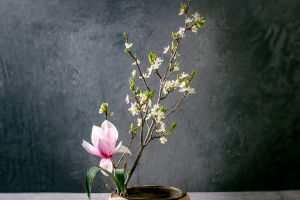Tulips are known for their bright colors and distinctive shape, and they have become a symbol of love, beauty, and abundance. Tulips have a rich cultural history, and their meaning and symbolism have evolved over time.
Tulips are native to Central Asia, and they were introduced to Europe in the 16th century. They quickly became popular in the Netherlands, where they were cultivated for their ornamental value. Today, the Netherlands is one of the world's largest producers of tulips, and the annual Tulip Festival in Amsterdam attracts visitors from around the globe.
Tulips come in a wide range of colors, including red, yellow, pink, purple, and white. Each color has its own meaning and symbolism. Red tulips are often associated with love and passion, while yellow tulips symbolize friendship and happiness. Pink tulips are a symbol of grace and femininity, and purple tulips represent royalty and nobility.
Tulips are known for their ability to adapt to a wide range of growing conditions. They can thrive in both warm and cold climates, and they can be grown in a variety of soils. Tulips are also easy to care for, making them a popular choice for gardeners and landscapers.
Tulips benefit humans in a variety of ways. They are often used for ornamental purposes, and they are a popular choice for weddings, anniversaries, and other special occasions. Tulips are also used in the perfume industry, where their fragrance is used to create a variety of scents.
In addition to their ornamental value, tulips also have medicinal properties. The bulbs of the tulip plant contain a variety of compounds that have been shown to have anti-inflammatory and antioxidant properties. These compounds may help to reduce inflammation and oxidative stress in the body, which can contribute to a range of health problems.
Tulips also have cultural significance in many parts of the world. In Iran, for example, tulips are a symbol of the new year and are often used in festive decorations. In the Netherlands, tulips have become a symbol of the country's cultural heritage, and they are often featured in art and literature.
Despite their beauty and popularity, tulips have also been associated with controversy. In the 17th century, the Netherlands experienced a tulip craze, where the value of tulip bulbs soared to astronomical levels. This led to the creation of a speculative market, where tulip bulbs were bought and sold like stocks.
Eventually, the market crashed, leaving many investors bankrupt and causing widespread economic damage.
Tulips have a fascinating cultural and historical significance, being a symbol of love, beauty, and abundance. Their colorful varieties and adaptability to different climates make them a popular choice for ornamental purposes, and they have also been used in the perfume industry and traditional medicine.
However, the infamous tulip craze of the 17th century highlights the potential risks of speculative markets. Despite controversies and changes in meaning across cultures, tulips continue to captivate people with their vibrant colors and delicate beauty, representing both the fleeting nature of life and the enduring human desire for beauty and meaning.


